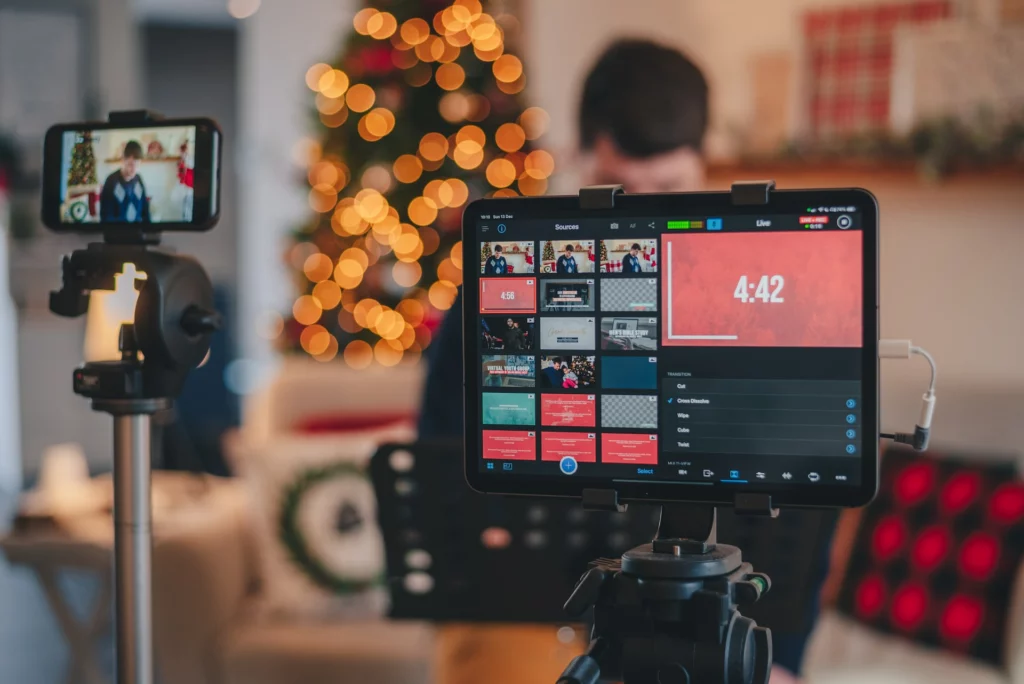Virtual events are no longer a mere imitation of physical gatherings. To truly captivate and entice your audience, a virtual event must embrace a dynamic essence, complete with opportunities for interactions, unique access to individuals, and lively Q&A sessions that elicit real-time responses.
This comprehensive guide explores the key components that make a virtual event memorable, engaging, and impactful and offers practical recommendations to ensure the success of your virtual event, leaving a lasting impression on your attendees.
Whether you’re a novice in the realm of virtual events or seeking to elevate your existing events to new heights, this guide equips you with the knowledge and strategies necessary to make your virtual event one that is worthy of being called “live.”
Understanding Your Audience
This starts with researching your target audience and taking note of demographics, interests, and preferences. This information acts as a blueprint, allowing you to tailor your event to align with their requirements and captivate their attention with relevant and engaging content.

In understanding your audience, it is imperative to determine the purpose and objectives of your event. Are you looking to educate your audience, generate leads, or provide entertainment? Having a clear understanding of what you wish to achieve will enable you to channel your efforts, resulting in the event that caters to the needs of your audience.
When you understand your audience, it is crucial to carefully select topics that align with their interests, incorporate interactive elements that foster engagement, and provide opportunities for them to network and connect.
Creating Engaging Content
Crafting a captivating event format requires careful consideration of the flow and structure of the event. By dividing the content into smaller segments, such as keynote addresses, panel discussions, and interactive sessions, you can make the event more manageable and ensure that your attendees stay engaged. To impart an interactive essence to your virtual event, consider incorporating live Q&A sessions, quizzes, and polls that provide opportunities for active participation and connection with the speakers and other attendees.

Incorporating elements of excitement and surprise is pivotal in creating a memorable virtual event. This can be accomplished by showcasing unique performances, conducting live demonstrations, or providing access to industry experts and thought leaders. These elements infuse a touch of individuality into the event, breaking away from the monotony of a typical virtual experience.
Embedding creative elements such as gamification or virtual live tours can also elevate the overall experience for attendees, fostering a more immersive atmosphere and setting your virtual event apart from competitors.
Enhancing the Virtual Experience
To enhance the virtual experience, consider implementing features such as virtual networking rooms, breakout sessions, or group activities. For example, virtual networking rooms can provide a space for attendees to interact with each other and engage in discussions or activities. Breakout sessions can facilitate smaller, more intimate conferences or workshops. Group activities can include virtual trivia games, team-building exercises, or even virtual happy hours.
High-resolution video enhances your virtual experiences. Lighting is one of the key factors to consider. Ensure that the presenter or performer is well-lit and that the lighting is just as engaging and interactive as in-person events. You should avoid using small or low-resolution video and image assets and do what you can to ensure great lighting for the talent. Soft, natural light is best, but it’s not always a possibility depending on where your speakers are tuning in from when the event occurs. Choose flattering camera angles and make sure all presenters or performers are framed similarly. Consider using multiple cameras to capture different perspectives if you are doing a hybrid event or filming from your office.

Remember, when it comes to virtual events, audio is king! Make sure your sound equipment is working perfectly, and there’s no background noise to ruin the show. If you want your virtual event to be a hit, high-quality audio and a visually appealing background that is not distracting are a must! Being able to transform the content into a podcast, YouTube video, or TikTok afterward will extend the life of your content, but you can best do that when you capture high-quality audio and video upfront.
Making Your Event Live-Worthy
The essence of making a virtual event lively lies in the infusion of interactivity. To sustain the attendees’ interest, different types of interactivity can be incorporated into the virtual event, such as Q&A sessions, surveys, games, breakouts, one-on-one networking sessions, polls, trivia, show and tell…the list goes on. These elements break the monotony of a typical lecture-style presentation and sustain the engagement and excitement of the attendees throughout the event.
Incorporating interactivity into virtual events results in a more customized and energetic experience for attendees. Interactive features like Q&A segments and polls let attendees provide feedback, and engage in real-time, letting attendees know they have a say in the direction of the event and that their opinions are valued. Interactivity provides an opportunity to assess the audience’s needs and adjust the event accordingly. By including surveys in the virtual event, organizers can determine the level of understanding and interest among the attendees and make prompt changes to the event content to meet their needs.

Interactivity also offers a possibility for real-time communication and collaboration. Virtual break-out rooms can be used to facilitate small-group discussions, allowing attendees to connect and engage with one another in a more intimate setting. This type of interaction can be especially beneficial for networking and building relationships, even in a virtual setting.
During the Event
Staying Engaged with Your Audience
It’s essential to respond to any questions and feedback from your audience during the event, showing that you value attendees’ input and are committed to providing a positive experience.
Managing Technical Issues
Technical difficulties can arise at any point during a virtual event, so it’s crucial to have a backup plan in place. This can include having backup equipment on hand and contingency plans for addressing common technical issues, such as poor internet connectivity or audio problems, and a staff member or a team to help solve issues for speakers and attendees.
If technical issues arise during the event, it’s essential to remain calm and professional. Try to resolve the issue as quickly as possible, and consider using a backup plan or pausing the event while you resolve the issue. Keeping attendees informed and updated during technical difficulties can help maintain their engagement and trust in your event.
The Difference Between a Virtual Event and Pre-Recorded Video
The main difference between virtual events and pre-recorded videos lies in their interactivity. When you attend a virtual event and can’t ask a question or talk with anyone in the audience, you’d leave thinking, “why didn’t you just record this and let me watch it on my own time?” AVOID THIS AT ALL COSTS. If that’s what your virtual event is going to be, scrap that idea because that’s not a virtual event, that’s a meeting that should have been an email.
Unlike virtual events, pre-recorded videos don’t provide the opportunity for real-time interaction and feedback from attendees. This can hinder the depth of engagement and comprehension amongst attendees, as they are deprived of the chance to connect with the speaker and receive instant answers to their inquiries.

Pre-recorded videos also have lower engagement and participation levels than virtual events. Attendees may be more likely to tune out or become distracted when watching a pre-recorded video, as they cannot actively participate or engage with the content. Without the ability to interact with the presenter or other attendees, the sense of community and connection that can be created during virtual events is not present in pre-recorded videos.
Guess what though, you can still pre-record speakers and present them in a virtual event and we actually recommend this. Often the speaker has a concept to present; it’s best if the content is presented succinctly and that naturally means that pre-recording this content is the best way to deliver the message. But wait…the host just let everyone know that when the video is being played in the virtual event, the speaker is in chat answering questions from the audience! This shows that the company and the presenter care 2x about this content and therefore, 2x about the audience.
Conclusion
With virtual events on the rise as a primary mode of communication and engagement, it is imperative to make them live-worthy and captivating. By incorporating interactive elements such as Q&A sessions, polls, games, breakout rooms, and one-on-one networking sessions, you can create a personalized and dynamic experience for attendees that enhances their engagement and appreciation of the event.
Proactively addressing technical issues and staying attuned to your audience’s needs and interests can amplify your virtual event’s impact and success. Taking the steps necessary to make your virtual event live-worthy is critical in today’s digital landscape.
Key takeaways, here:
- Interactivity is vital to creating a personalized and dynamic experience for attendees
- Understanding your audience, encouraging participation and interaction, and responding to questions and feedback are essential for staying engaged with your audience
- A technical backup plan can help you manage technical difficulties during the event
There are many creative and innovative ways to make virtual events live-worthy. From incorporating interactive elements to using high-quality audio and video equipment, many strategies and videos which you can find on our homepage can help you create a virtual event that is both engaging and enjoyable for attendees. So, get creative and make your virtual event live-worthy!z
Frequently Asked Questions
How do I research my target audience for a virtual event?
Researching your target audience for a virtual event requires a combination of data analysis, surveys, and focus groups. Start by gathering data on your current audience, including demographics, location, and past event attendance. You can also use online surveys to collect information directly from potential attendees and analyze their interests and preferences. Focus groups can be useful for getting more in-depth feedback on topics such as event format, content, and technology needs.
What makes a virtual event format engaging?
Consider incorporating interactive elements such as Q&A sessions, virtual networking opportunities, and gamification elements to make a virtual event format engaging. High-quality audio and video are also crucial for ensuring that attendees stay engaged. In addition, break up the event into smaller, more manageable segments to help maintain focus and engagement.
How can I make my virtual event visually appealing?
Elevate the visual appeal of your virtual event by incorporating sleek and high-resolution graphics, intriguing videos, captivating images, and an effortless interface. Consider incorporating virtual and augmented reality elements to enhance the experience for attendees.
How can I effectively promote my virtual event?
Effective promotion of a virtual event requires a multi-channel approach. Utilize email marketing, social media, and other digital channels to reach your target audience. Partnering with other organizations and influencers can also broaden your reach. Promotions are not enough, and we recommend you send personalized invitations and follow-up reminders, which can be useful for boosting attendance.
What are some tips for encouraging social interaction and networking at a virtual event?
To encourage social interaction and networking at a virtual event, consider incorporating interactive elements such as virtual roundtable discussions, group chats, and virtual networking sessions. Encourage attendees to use video during virtual events and provide opportunities for them to connect and collaborate. Incentives, such as virtual door prizes, can also encourage participation and foster a sense of community.






